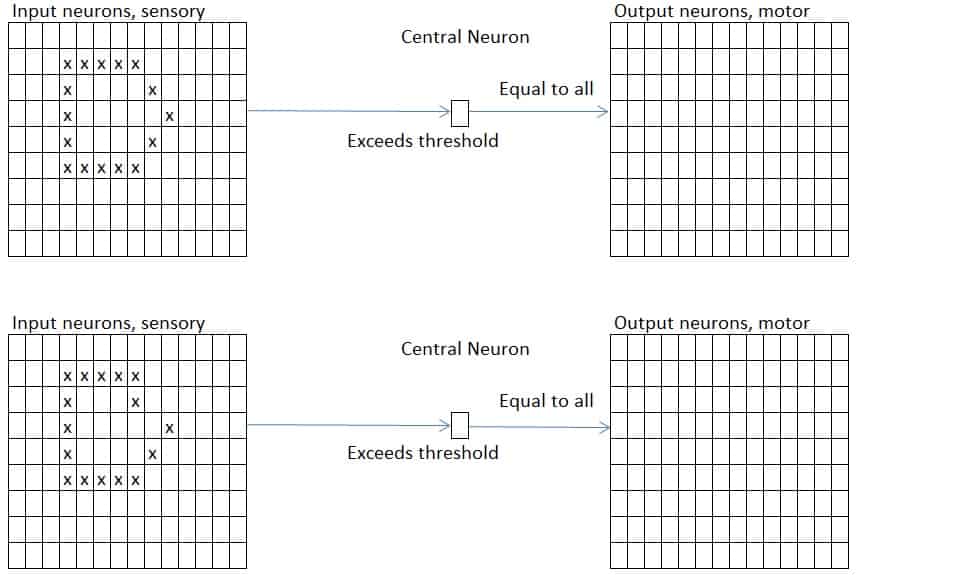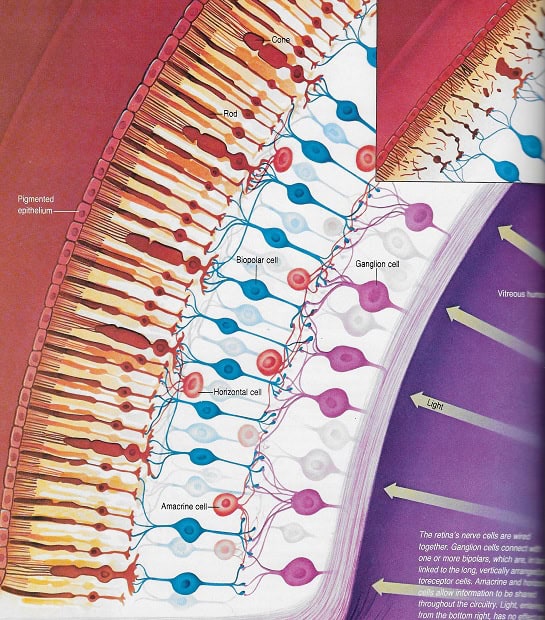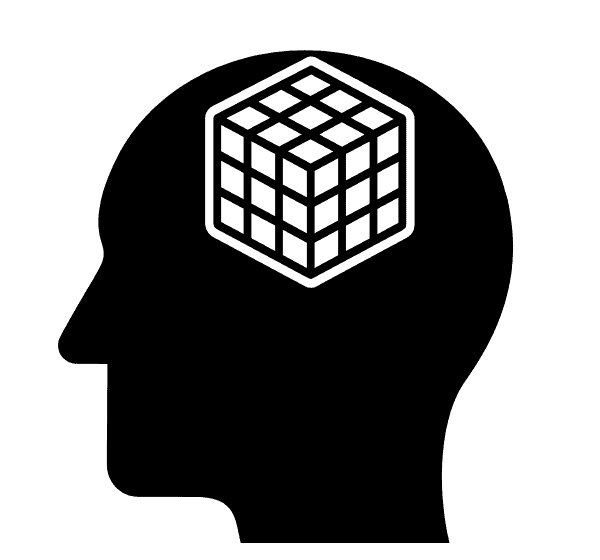Almost Gate
The Almost Gate is the key to understanding the power and the problems of human brain functioning. The Almost Gate treats as identical, input data that is different. On the input side, there is an array of sense data. Some of those input neurons are activating and some are deactivating. They all send their results to the central neuron. When the sum total of electrical potential exceeds the threshold of the neuron, the neuron fires. The Almost Gate has been opened. The central neuron sends its full signal down its axon to all output motor neurons, no matter which of the input neurons summed to cause the central neuron to exceed its threshold and to fire.
Before I go further into an example, let me mention some background facts of importance. Of the 85 billion neurons in the brain, each has about 10 thousand connections to other neurons. So considering our example, of the 5 thousand inputs, the neuron’s Almost Gate can be opened by different inputs and yet it gives the same output. All 5 thousand outputs get the same signal.
In the example below, two arrangements both trigger the output layer to exactly the same degree, yet one input is a smooth pentagon, while the other has a degraded feature on the third row, eighth column. To be a smoother pentagon, it should have the third row, ninth column stimulated, yet that doesn’t matter to the central neuron. Its threshold has been exceeded in both cases. It sends the same signal downstream to all its output neurons for both arrangements.

As you will readily realize, the connection between sense input and motor output is not direct through a signal cortical neuron. Of the 85 billion neurons in the brain only about 1% connect directly to a sensory or a motor neuron. Of all cortical cells, 99% get their data and communicate their outputs only to other interior cortical neurons.
Let’s just assume for a back of the envelope estimate than fifty thresholds lie between the sense input and that data arriving in the frontal lobes, where we make our decisions. Let’s also take a swag of 99% accuracy triggers the Almost Gate.
Would it surprise you that when we experience the same sensory situation there is only a 45% chance that our frontal cortex receives the exact same sensory information? Why? Because the incoming sense data is merged with memories and understanding before it is considered in the frontal cortex. Assumption is each step from raw sense data to frontal lobe presentation proceeds with a 99% fidelity.
That’s a nice, surprising consequence of the Almost Gate. It fixes uncertainty for subsequent thoughts.
Neural Cascade and Indeterminacy
Eighty steps based on 16 billion cortical neurons being coordinated over 200 million axons in the corpus callosum. Eight steps with 99% fidelity leads to 45% delivered fidelity (99% to the 80th power).
An existing estimate the 100-step rule, uses fifty inward steps and fifty outward steps.



3 thoughts on “Almost Gate”